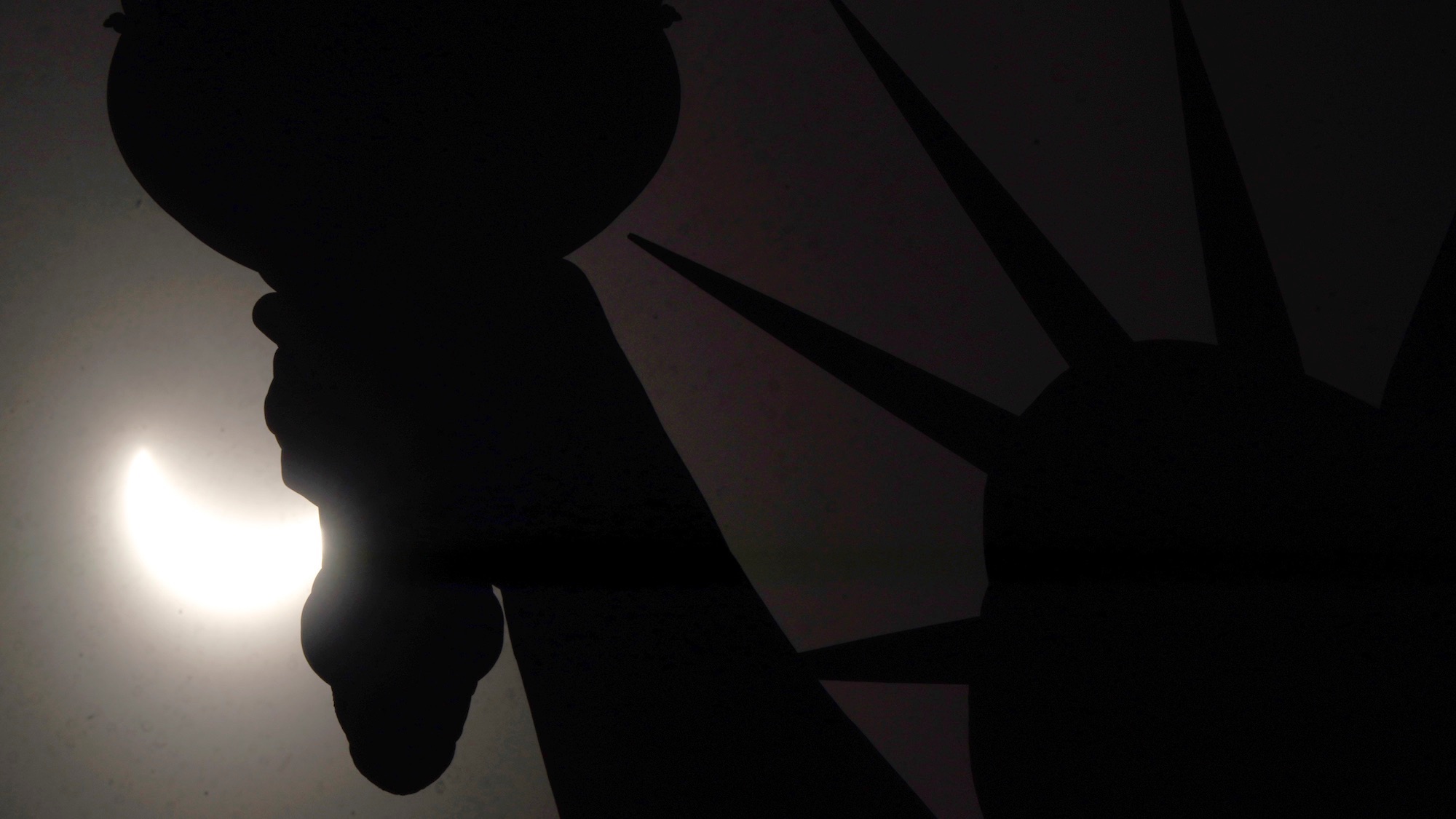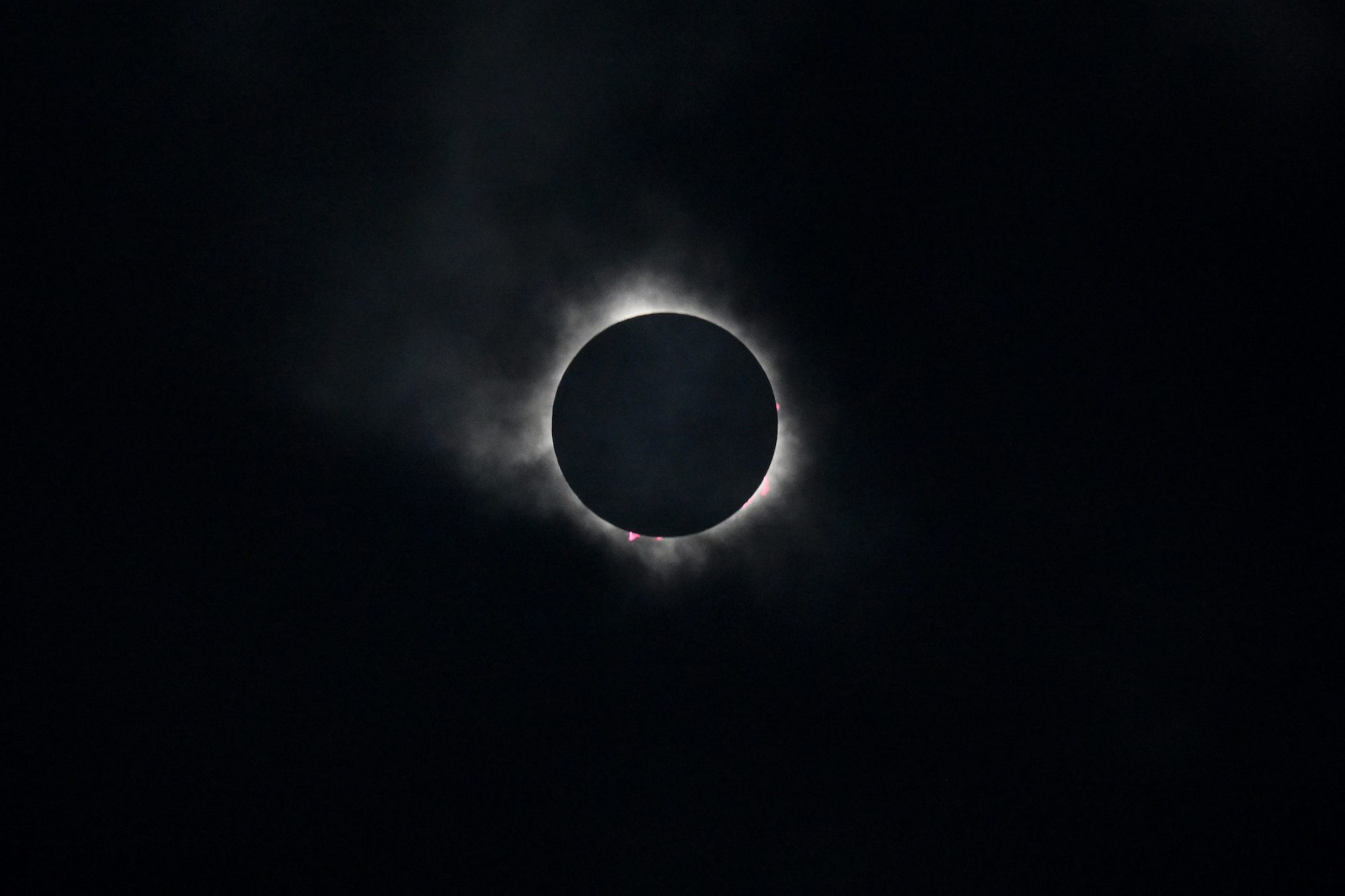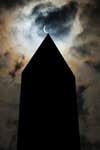April 8th’s total solar eclipse began on the Pacific coast of Mexico and ended off the Atlantic coast of Canada.
By
PopSci Staff
|
Published Apr 8, 2024 4:35 PM EDT

A partial solar eclipse moves across the sky near the Crown of the Statue of Liberty on Liberty Island. TIMOTHY A. CLARY / AFP
Today was one for the history books as a total solar eclipse crossed North America. The sky first darkened in Mazatlán, Mexico on the country’s Pacific Coast. Torreón, Mexico saw the longest totality at 4 minutes and 28 seconds. It then entered the United States through Texas and traveled through Oklahoma, Arkansas, Missouri, Illinois, Kentucky, Indiana, Ohio, Pennsylvania, New York, Vermont, New Hampshire, and Maine. It entered Canada via Southern Ontario, and continued through Quebec, New Brunswick, Prince Edward Island, and Nova Scotia. The eclipse left the continental North America on the Atlantic coast of Newfoundland, Canada, at 5:16 p.m. NDT.
Here’s how the eclipse looked at various locations, from Mexico to Canada.
 The moon eclipses the sun during a total solar eclipse across North America, at Niagara Falls State Park in Niagara Falls, New York. The next total solar eclipse that can be seen from a large part of North America won’t come around until 2044. (Photo by ANGELA WEISS / AFP.
The moon eclipses the sun during a total solar eclipse across North America, at Niagara Falls State Park in Niagara Falls, New York. The next total solar eclipse that can be seen from a large part of North America won’t come around until 2044. (Photo by ANGELA WEISS / AFP.
 The solar eclipse is seen above the Washington Monument in Washington, DC. Photo by Chip Somodevilla/Getty Images
The solar eclipse is seen above the Washington Monument in Washington, DC. Photo by Chip Somodevilla/Getty Images
 The moon eclipses the sun during a total solar eclipse across North America, in Bloomington, Indiana. Photo by JOSH EDELSON / AFP
The moon eclipses the sun during a total solar eclipse across North America, in Bloomington, Indiana. Photo by JOSH EDELSON / AFP
 A sliver of the sun is through the cloudsin Niagara Falls, Ontario, Canada. Photo by Vaughn Ridley/Getty Images
A sliver of the sun is through the cloudsin Niagara Falls, Ontario, Canada. Photo by Vaughn Ridley/Getty Images
 A child observes the reflection of the eclipse in Guadalajara, Mexico. Photo by Leonardo Alvarez Hernandez/Getty Images
A child observes the reflection of the eclipse in Guadalajara, Mexico. Photo by Leonardo Alvarez Hernandez/Getty Images
 A solar eclipse is seen through the clouds in Niagara Falls, Ontario, Canada. Photo by Vaughn Ridley/Getty Images
A solar eclipse is seen through the clouds in Niagara Falls, Ontario, Canada. Photo by Vaughn Ridley/Getty Images
And if you’re wondering what the eclipse looked like from space, NASA shared the view from the International Space Station.
If you can, consider recycling or donating any used eclipse glasses. Visit Astronomers Without Borders to learn more about how you can recycle your glasses. If you are located in the path of totality, many libraries will also offer convenient eclipse glasses recycling locations.
>>> Read full article>>>
Copyright for syndicated content belongs to the linked Source : Popular Science – https://www.popsci.com/science/2024-eclipse-photos/
















![[News] Japan Develops 10nm Nanoimprint Technology, with Potential to Tackle EUV Bottleneck – TrendForce](https://earth-news.info/wp-content/uploads/2025/12/329851-news-japan-develops-10nm-nanoimprint-technology-with-potential-to-tackle-euv-bottleneck-trendforce-360x180.jpg)














